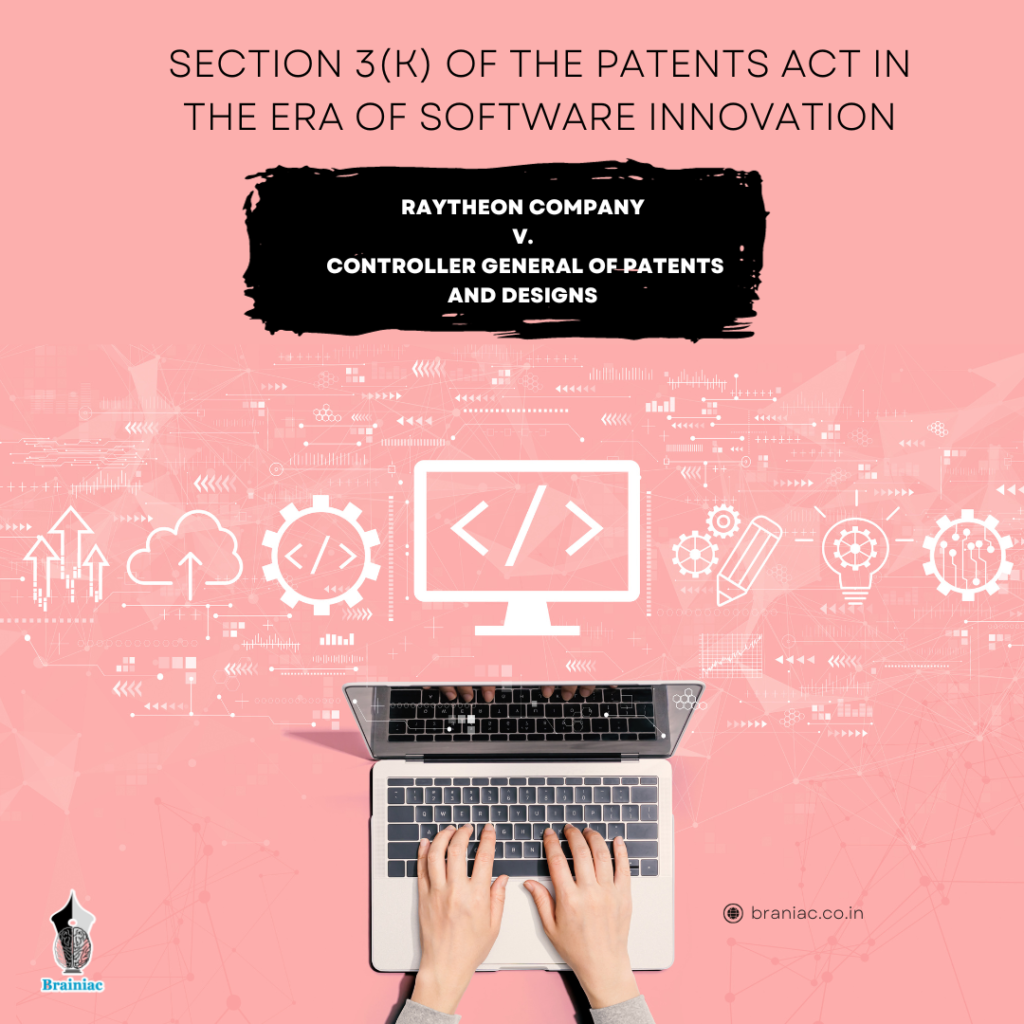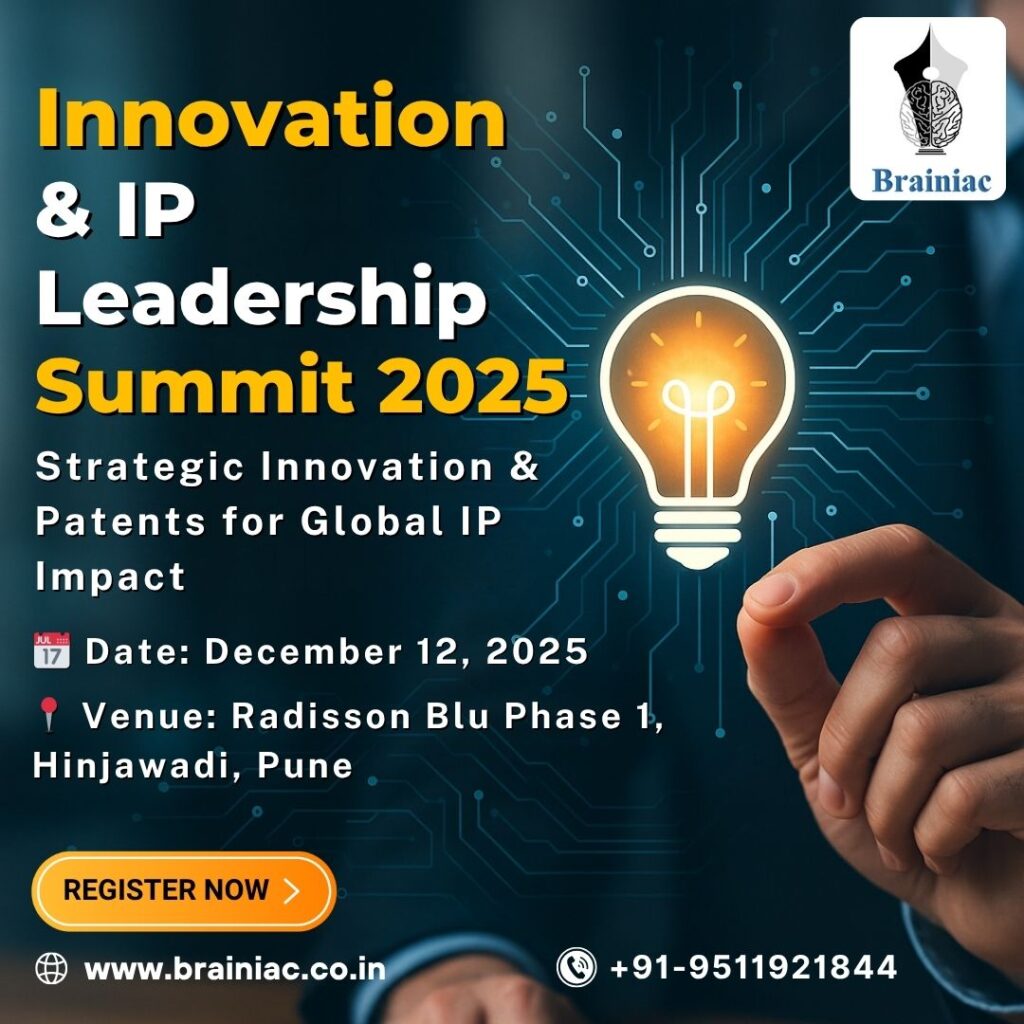Introduction
In a recent groundbreaking verdict, the Delhi High Court has brought into focus a critical issue concerning Section 3(k) of the Patents Act, 1970, in the context of software-related patents. The case in question is Raytheon Company v. Controller General of Patents and Designs (2023:DHC:6673). This case is pivotal in deciphering the eligibility of software for patent protection in India and understanding the intersection between legal provisions and patent application guidelines.
Demystifying Section 3(k)
Section 3(k) of the Patents Act, 1970 is an important provision that shapes the boundaries of patent eligibility in India. It specifies categorically that “mathematical or business methods or a computer programme per se” cannot be considered inventions under the Act, making them ineligible for patent protection. However, the wording of this section is often regarded as vague, leading to differing interpretations and controversies over the years.
The Evolution of CRI Guidelines
To clarify the ambiguity surrounding Section 3(k), the Indian Patent Office introduced a series of Computer Related Invention (CRI) Guidelines. These guidelines aimed to provide a clearer framework for assessing the patentability of computer-related inventions. The most significant guidelines include:
- Draft Guidelines for Examination of Computer Related Inventions, 2013
- Guidelines for Examination of Computer Related Inventions, 2016
- Revised Guidelines for Examination of Computer Related Inventions, 2017
The 2013 guidelines introduced the requirement of ‘novel hardware’ as a condition for patentability in the realm of computer-related inventions. However, the 2016 guidelines reinforced this requirement, creating confusion and debate. In response to the controversy, the 2017 guidelines were introduced, removing the ‘novel hardware’ condition. These guidelines emphasised that computer programmes in and of themselves are not patentable, but inventions that demonstrate a technical contribution or effect beyond the programme itself may be eligible for patent protection.
Raytheon Company v. Controller General of Patents and Designs
In this case, Raytheon Company, an American defense and aerospace company, filed a patent application for software titled ‘Scheduling in a High-Performance Computing System.’ The Indian Patent Office initially rejected the patent application based on the Computer Related Invention (CRI) Guidelines of 2016, which required a “novel hardware” element for software to be patentable.
Raytheon, in its appeal to the Delhi High Court, argued that the Controller had made an error in relying on the 2016 guidelines, which had been replaced by the 2017 CRI Guidelines. The 2017 guidelines removed the “novel hardware” requirement and instead emphasized that computer programs could be eligible for patent protection if they provided a technical contribution or effect beyond the program itself. Raytheon contended that their software met this criterion by offering a technical solution to a technical problem, which reduced the time required for scheduling tasks on a high-performance computing system.
On the other side, the Controller General of Patents and Designs argued that the patent application consisted primarily of software and did not involve novel hardware. Therefore, the Controller contended that it fell under Section 3(k) of the Patents Act, which excludes “computer programmes per se” from patent protection.
The Delhi High Court, in its decision, ruled in favor of Raytheon. The Court held that the patent office had erred in applying the 2016 guidelines instead of the 2017 guidelines. The Court emphasised that, under the 2017 criteria, computer programmes might be patentable if they provided a technological development and a technical solution to a technical problem, leading to a better technical effect on the underlying software. This decision essentially clarified that software patents could be granted under certain conditions, marking a significant development in the interpretation and application of Section 3(k) of the Patents Act.
The Court’s decision aligns with its earlier ruling in Microsoft Tech. Licensing, LLC v. Controller General of Patents and Designs case. In this case, it was clarified that computer programs, per se, are not eligible for patent protection. However, if they lead to a technical effect or address a technical problem, they might qualify for patent protection. This approach, supported by the Delhi High Court, prioritizes substance over form and emphasizes that method claims in computer program patents can be patented under specific conditions.
Analysing the Conflict Between Law and Guidelines
The evolving interpretation of Section 3(k) and its alignment with the CRI guidelines has raised significant concerns about the interplay between legal provisions and patent application guidelines. It is essential to recognize that the CRI guidelines are not legally binding but serve as tools for interpretation. They should not take precedence over the explicit provisions of the Patents Act. Section 3(k) is not entirely clear in its wording, but it was intended to exclude patent protection for computer programs in their raw form. The guidelines, especially the 2017 version, arguably extend beyond the legislative intent, leading to a conflict between the law and its interpretation.
Conclusion
The ongoing discussion regarding the patentability of software in India and the significance of CRI guidelines is brought to light in the case at hand. The protection of inventors’ rights and the advancement of the public interest must be balanced, and this is something that patent authorities and the courts must do. To ensure clarity and consistency in the patent system, the law and regulations must be in line with the legislative intent. Further amendments may be in the works, aiming to clarify the application of Section 3(k) while respecting the legislative framework and intent, according to the recent request for comments on guidelines and manuals.



